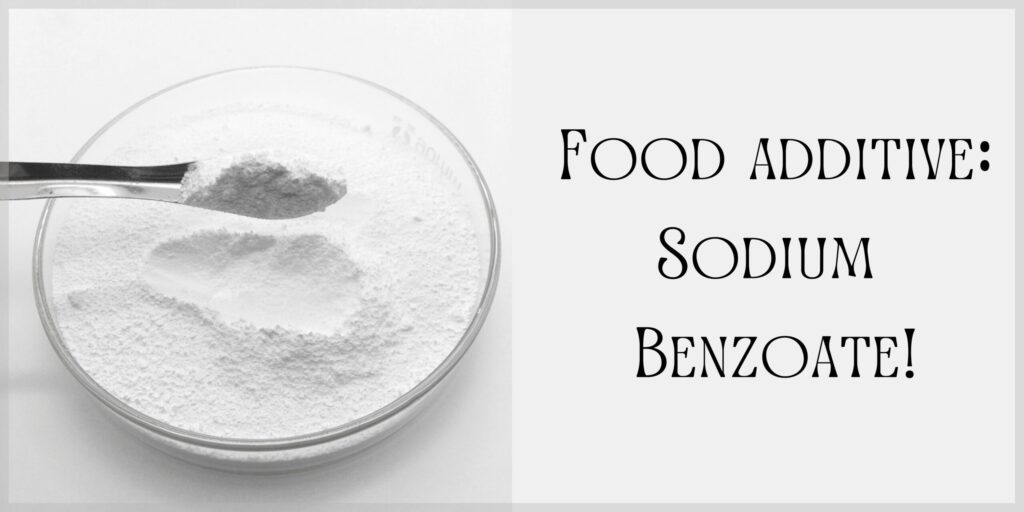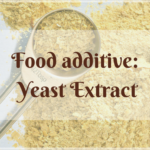Effects of sodium benzoate
The effects of sodium benzoate are entirely described in this post. As a preservative, sodium benzoate is added to packaged foods, some sodas, and personal care items to make them last longer.
Sodium benzoate is a food additive that can be found in many foods and drinks. The mitochondria break it down into hippurate, which the kidneys then get rid of. Sodium benzoate is a sodium salt formed by the reaction of sodium hydroxide and benzoic acid. Even on its own, benzoic acid is a good preservative, and mixing it with sodium hydroxide makes it easier to dissolve in products.
Natural sodium benzoate doesn’t exist, but benzoic acid does. It can be found in apples, tomatoes, cloves, plums, berries, cranberries and cinnamon.
On its own, sodium benzoate has a slightly salty and bitter/acidic flavour. It is, however, beneficial as a preservative in a wide range of products. Some people say this added substance made by humans is safe, while others say it causes cancer and other health problems.
Various applications of sodium benzoate
In addition to processed foods and drinks, sodium benzoate is used in some medicines, cosmetics, personal care products, and industrial products.
The FDA approved sodium benzoate as the first food preservative, which is still used today. It is called “Generally Recognized As Safe” (GRAS), which means that experts think it is safe when used as directed. It is approved as a food additive around the world and has been given the number 211. For example, it is called E211 on food labels in Europe.
In food, sodium benzoate stops bacteria, mould, and other microbes from growing, which keeps the food from going bad. It works exceptionally well in acidic foods.
Causing inflammation is included in the effects of sodium benzoate. Animal studies have shown that sodium benzoate can cause inflammation in the body in direct proportion to how much is eaten. This includes the fact that inflammation can help cancer grow.
Harmful effects of sodium benzoate
In a test tube study with mouse fat cells, sodium benzoate stopped the release of leptin, a hormone that makes you feel full. Based on the exposure, the reduction was between 49 and 70%. This means that it reduces appetite.
Being a potential cancer agent is one of the effects of sodium benzoate. A big worry is that sodium benzoate can change into benzene, which is known to cause cancer. Soda and other drinks with sodium benzoate and ascorbic acid, a form of vitamin C, can make benzene. Benzene is more likely to form in diet drinks than in regular sodas and fruit drinks, which have more sugar. Other things, like heat, light, and longer storage times, can also cause benzene levels to rise.
A small percentage of people may go through allergic reactions like itching and swelling after eating foods or using personal care products with sodium benzoate in them.
The toxic outcomes of sodium benzoate
Studies have shown that the more sodium benzoate there is, the more free radicals are made. Free radicals can hurt your cells and make you more likely to get a long-term illness. This implies that sodium benzoate causes oxidative stress.
Attention Deficit Hyperactivity Disorder, also known as ADHD, is one of the effects of sodium benzoate. A study of college students found that ADHD was linked to drinking more drinks with sodium benzoate. Some studies have also linked the additive to ADHD in children.
Research shows that sodium benzoate may make you more likely to get allergies, oxidative stress, ADHD, obesity, and inflammation. It can also change into benzene, which is a carcinogen, but the small amounts found in drinks are safe.
Suppose you’re worried about getting too much benzene. In that case, the FDA says you shouldn’t buy soft drinks that have both sodium benzoate and ascorbic acid or its chemical cousin, erythorbic acid.
If you can’t wholly avoid benzene, you can limit how much you’re exposed to it by sticking to healthy food alternatives, including pressed fruit juice, fresh fruit, water, and vegetables that haven’t been pickled.



